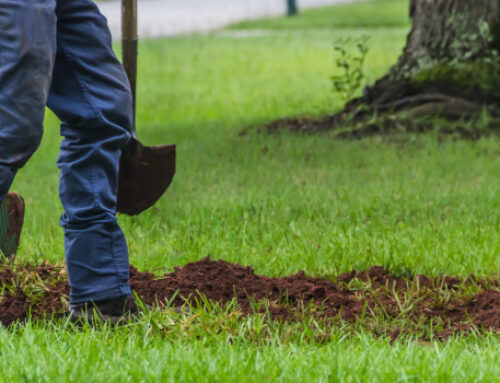You try your best to be a good neighbor: you put your trash bins out on the right days; you keep your property neat and well kept; and you respect community areas and the people in them.
You are a good neighbor—but what about your pet?
It’s just as important for our furry friends to be good neighbors in our communities, and it’s up to us to help them do just that.
So what can you do to help your pet be a good neighbor? Here are a few guidelines.
Follow leash rules.
Most communities have rules requiring pets to be leashed in public areas. For the safety of you, your pet, and the other people and animals around you, please follow these rules—always. Even if you are confident that your pet is well-behaved, gentle, and will come when called, it is always best to be cautious and to follow the guidelines your community has set.
Check your community rules to see if there are any appropriate places/times to let your pet off leash in your neighborhood. If not, consider finding a local dog park that allows leash-free roaming. You could also consider getting a long leash that will allow your dog to roam fairly freely, while also giving you the ability to keep them within your control.
Pick up pet waste.
You want your pet to do their business outside, but if your pet answers the call of nature in a public area, please be sure to clean up after them and dispose of the waste properly. This ensures that the community’s shared spaces remain clean and sanitary for everyone to enjoy.
Some communities provide waste disposal bags and designated trash bins for pet waste. Take advantage of these resources when you can! If your community does not offer these, be sure to bring your own waste bags on every walk so that you can clean up your pet’s messes quickly.
Control excessive barking.
It’s unrealistic to completely eliminate dog barking. Barking is one of the primary ways that dogs communicate with their owners. That said, excessive barking, especially during quiet hours, can be extremely bothersome to neighbors.
Do your best to keep your dog’s barking to a minimum. This is best accomplished through training and keeping your dog entertained (especially when you aren’t going to be home). If your dog is barking excessively outside, bring them inside to minimize the nuisance for your neighbors.
Minimize opportunities for escape.
Free-roaming pets can be unnerving to neighbors. They can also cause destruction or other messes in community areas or on private property. Even worse, if your pet is not well trained, they can pose a safety hazard to other pets and people in the community.
If you allow your pet to roam freely in your yard, be sure to have measures in place to keep them there—such as a locking gate and appropriately high fence. Make sure your neighbors are familiar with what your pet looks like so that they can contact you if they happen to see your pet wandering the streets.
Practice safe socialization.
A well-socialized pet is less likely to be a threat to people or other animals. Practice socializing your pet safely. Introduce them to individuals or small groups of people before bringing them to the neighborhood block party. Allow opportunities for them to play with other pets in a supervised, controlled setting. Start with your neighbors and their pets, and then expand your circle to people in your neighborhood you see regularly.
Train them well.
A well-trained dog (or any animal) is going to be much better behaved than one who has received no training. Trained animals will be friendlier, more obedient, and more trustworthy, even in unpredictable situations. Check out local options for pet training that will work for your schedule and needs. Bonus: a well trained animal won’t just be a better member of the community, but a better member of your family!
In addition to this, become familiar with your dog’s behavior and cues. Know when they’re stressed or overly excited, and know how to help them calm down before the situation escalates and becomes unsafe.
Give them plenty of exercise.
A tired pet is less likely to get into trouble. They aren’t going to jump fences, dig up yards, or bark uncontrollably. Make sure your dog is getting plenty of exercise through daily walks, opportunities to run on a long leash, and games like fetch or tug.
Check in.
It can sometimes be difficult to see what is right in front of you. If your pet is bothering your neighbors, you may not know unless they say something…and they may feel uncomfortable saying something. Check in with your neighbors every once in a while to make sure your pet isn’t causing problems for them or the community in general. Be polite and open to the feedback. After all, you want to be a good neighbor, too!
Related: Homeowners Guide to Home Improvement Projects.
When you’re part of a neighborhood, you want to do everything you can to be courteous and respectful, and that includes managing your pets the right way. As long as you follow these tips and your community’s guidelines, your pets will be the best four-legged neighbors your community could ask for!







